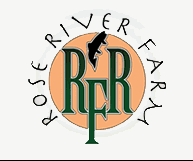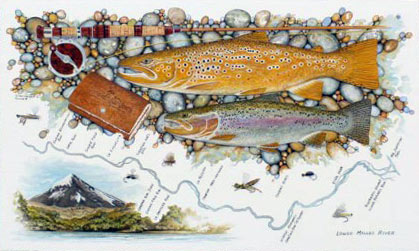Bowfin - January 2011, Fish of the Month!
Your source for flyfishing and flycraft resources since 1975.
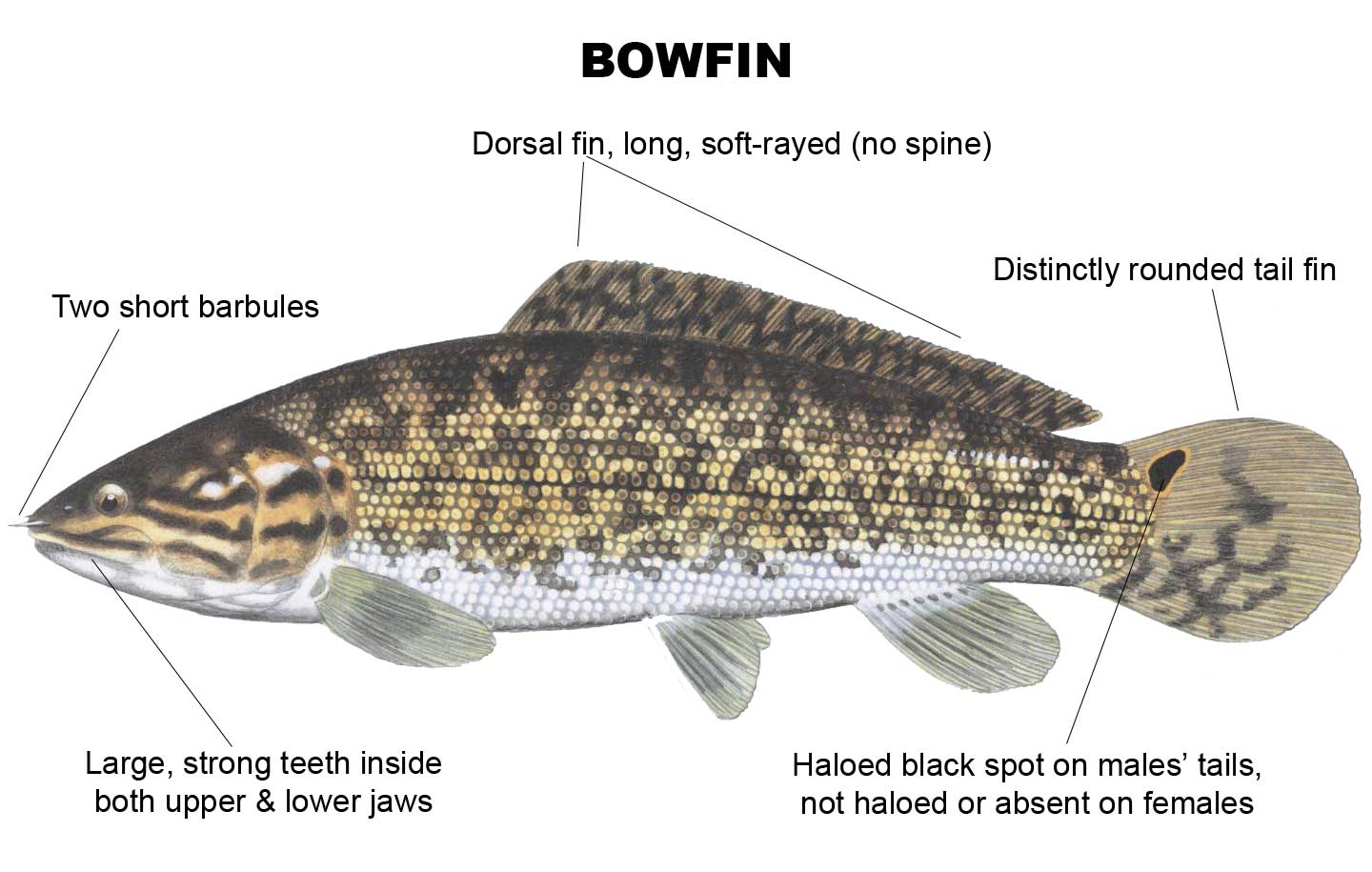
Hi Folks, Peter Thompson here. I’m the illustrator/author of the recently published Freshwater Game Fish of North America, an Illustrated Guide. You can check out the book at www.flyrodreel.com/node/12998 .
I met Ron Weiss, the owner of the Hook & Hackle Company, at last spring’s Somerset New Jersey’s Fly Fishing Show. Having got to know each other some, we’ve been discussing ways for us to get more helpful information out to you all. When I started work on that latest of my now 3 books about fish, many people questioned the wisdom of the undertaking because, “Anyone who fishes already knows what he/she is fishing for.” To counter that (I was already determined to do the book) I’d relate this true story. One fall, here in central New York, I went to work as a private warden on the lower end of the now infamous Salmon River. Part of my job that I really enjoyed was checking what species and numbers of fish our clients were catching on any given day. On a beautiful October afternoon I got talking with a father/son combo fishing in a riffle just upstream from the river’s confluence with Lake Ontario. “How’re you guys doing today?” I asked. “Good! Great day, huh?” was the reply. “Yes, indeed,” says I. “Any fish?” “Yeah,” says him. “How many?” I asked. “Three.” “What are they?” I asked. “Don’t really know, “ they said. Always loving to look at fish, I walked over to the stringer where they’d tethered the three fish. All three were bright silver, fresh out of the lake. None of them was particularly big for that river, and all were in fine condition; but that’s where the similarity ended. They had a Coho salmon, a Chinook salmon, and a “chrome” Steelhead. So, I walk back to these guys and begin more conversation, starting with the field marks that make it easy to distinguish one fish you’ve just caught from another. That done, I asked where they were from and how long they’d been fishing the river. From a couple of states south of here (the names have been changed to protect the innocent), these guys had been annually fishing the Salmon River for fifteen years!!!! Luckily for them, there wasn’t an out-of-season, over or under the “slot limit” Lake trout, a species which does occasionally enter the river, sometimes in great numbers, (no one seems to know quite why they do, but they do.) dangling on that stringer. If there had been, any New York State Department of Environmental Conservation Officer could have ticketed them, confiscated their fish, their gear, AND their vehicle, all while these guys who couldn’t tell one fish from another went to court, surely to be at least fined for their lack of knowledge.
So, folks, in an attempt to keep you fine anglers out of court AND enhance your fly-fishing pleasure, here’s the first installment of The new Hook & Hackle Fish of the Month Column.
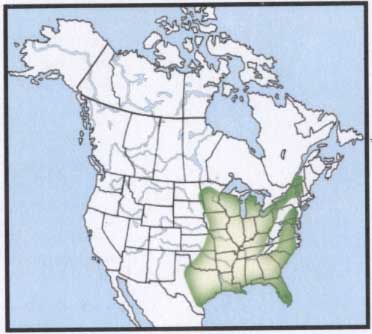 1.Bowfin
1.Bowfin
Amia calva
Local Names:
Mudfish, Dogfish, Grindle, Grinnel, Cyprus trout, Blackfish
Average Size:
18 to 28 inches, 5 to 9 pounds, Hmmmmm, not bad!
Distinguishing Field Marks:
1. Thick, robust body, nearly cylindrical in cross-section
2. A single long, soft dorsal fin
3. Distinctly rounded, broad tail fin
4. Two short barbels at the tip of the snout
5. Males usually have a nearly black spot haloed in yellow or orange at the upper base of the tail
6. In adult females the black spot is not haloed, or it may be absent.
Fly Fishing for Bowfin
I can well imagine many of you reading this and thinking, “BOWFIN?!?!? What the hell is a Bowfin, and why is this guy posting it on a fly fishing site?” Well, there are three answers to that question: 1. I’m going to organize this column in what is usually referred to as “scientific” or “taxonomic” order. That order begins with the most primitive species/families and continues forward to more complex ones, and that puts the Bowfin first of the species included in my book, Freshwater Game Fish of North America and, first on this list. (There are a bunch of more primitive freshwater fish species swimming around in our waters!) 2. More and more of us fly-rodders are seeking Largemouth bass (and other “warm-water” species. Bowfin and Largemouth bass share the same habitat preferences, so there’s a good chance that you might hook a Bowfin when you’re fishing for bass. 3. You NEED TO KNOW that, when taking a hook out of the mouth of a Bowfin, you must use serious caution to avoid being bitten by this species’ large, strong teeth.
Now that that’s out of the way; expect to hook the occasional Bowfin anywhere you might be shallow water fly fishing for Largemouth bass. Probably no one will make a special fishing trip just for Bowfin, but, they are actually very good game fish. They hit hard, make powerful runs, and will also jump clear of the water (maybe that’s why some folks call ‘em Cyprus trout).
Oh yeah, don’t go fishing for Largemouth bass (or Bowfin) with your 5 weight outfit. An 8 or 9 weight rig is just right, not so much because the fish are so big, but because the flies are and you’ll need some power in your hand to cast them.
Best Fly Patterns
Any of the popular Largemouth bass flies, either sinking or floating, will activate a Bowfin’s urge to strike. Here are two patterns we recommend to begin your Bowfin fly fishing adventures.
Dahlberg Diver
(Urban Variation)
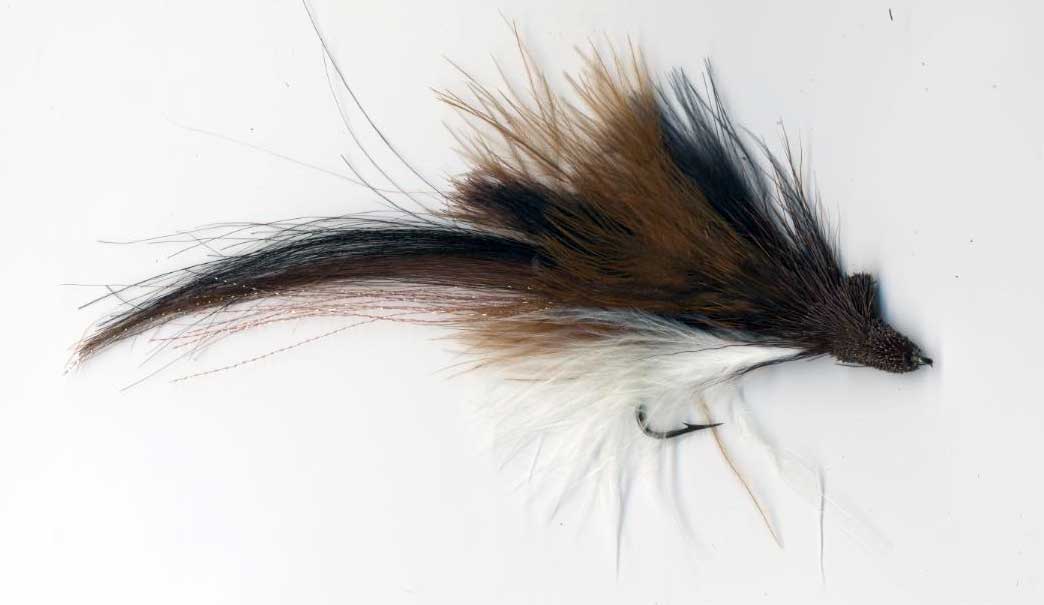
Thread: Brown or olive Kevlar or monocord
Hook: Heavy wire, straight eye. The one in the photograph happens to be a “stinger” hook. (Big fish eat big food, so, as the hook is the basis for the fly? Think big hooks for this one.)
Tail: A few strands of gold or copper crystal flash under brown, then black artificial hair (the beauty supply store stuff works just as well as the fly shop stuff. ( I found mine on the sidewalk here in Syracuse, N.Y. while I was out walking my favorite dog. I can only assume that some young woman saw that her hair-piece had a higher and better use and left itfor me to find))
Wing: A few more strands of brown, then black artificial hair, about long enough to reach to the bend of the hook, then brown marabou, then black marabou a bit shorter than the hair.
Throat: White marabou as long as the artificial hair in the wing.
Collar and Head: For this one, dark brown deer hair spun and clipped to shape. (Note the original Dahlberg Diver top collar, and be sure to trim the deer hair to allow for it.)
Thompson’s Counterfeit Crayfish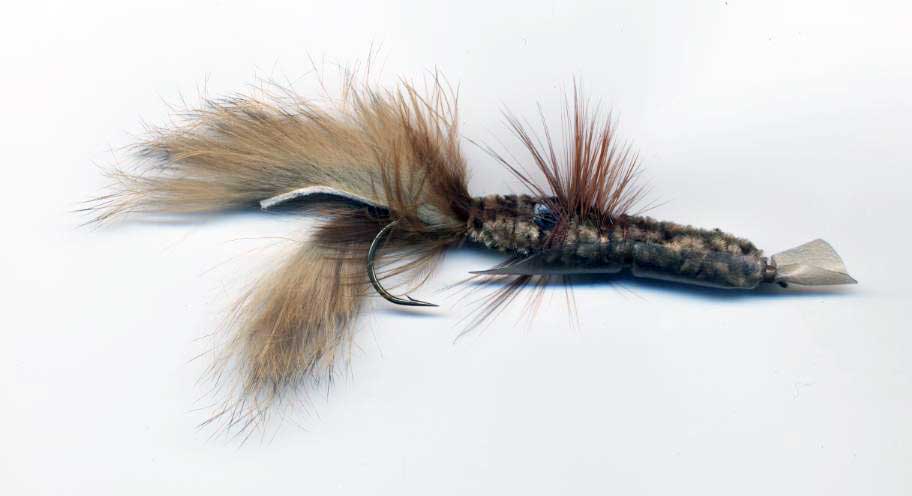
Thread: Kevlar or monocord of appropriate color
Hook: 4 to 10 X-long streamer; this to allow enough of it to extend well ahead of the tying materials and increase your chances of hooking a taking fish.
Antenna: Brown deer hair with brown marabou on top and bottom.
Claws: Rabbit fur “Zonker” strips with the hair cut short on the body end, giving the claws a more natural shape.
Body: 1. For the larger sizes, wrap an underbody of yarn to add bulk. On smaller sizes this is not necessary. Cover the underbody for a short distance with variegated chenille. Tie the chenille off.
2. Tie in lead dumb-bell eyes of the appropriate size on the top side of the hook at this point.
3. Tie in the butt end of a proportionately large hackle (in this case, brown).
4. Turn the fly over, so that the lead eyes are on its underside, then continue to wrap the chenille toward the eye of the hook, tying it off again, at a point that will allow 4 or 5 turns of the hackle which forms the crayfish’s legs. Tie off the hackle and trim the hook-point side of it which now becomes the crayfish’s back
5. Cut a wide strip of Dura-skin of the appropriate color long enough to reach from the bow to the stern of the fly, with an additional amount long enough to over-hang the eye of the hook and form a tail. Taper the front of the Dura-Skin to form a broad point, but leave the tail section its full width, only slightly rounding the corners. Tie the shaped Dura-Skin in at the point where the small end of the hackle was tied off. Pull the tail section of the Dura-Skin forward to allow room to tie the remainder of the body. This is done by simply winding the chenille to the eye of the hook. At this point, tie off and whip-finish the chenille. Then pull the Dura-Skin tightly down over the hook eye. Make a small incision in the Dura-Skin so that it can be pulled down over the eye and then tied off.
Note: Both these patterns can be tied in a multitude of color combinations as appropriate for your local waters.


